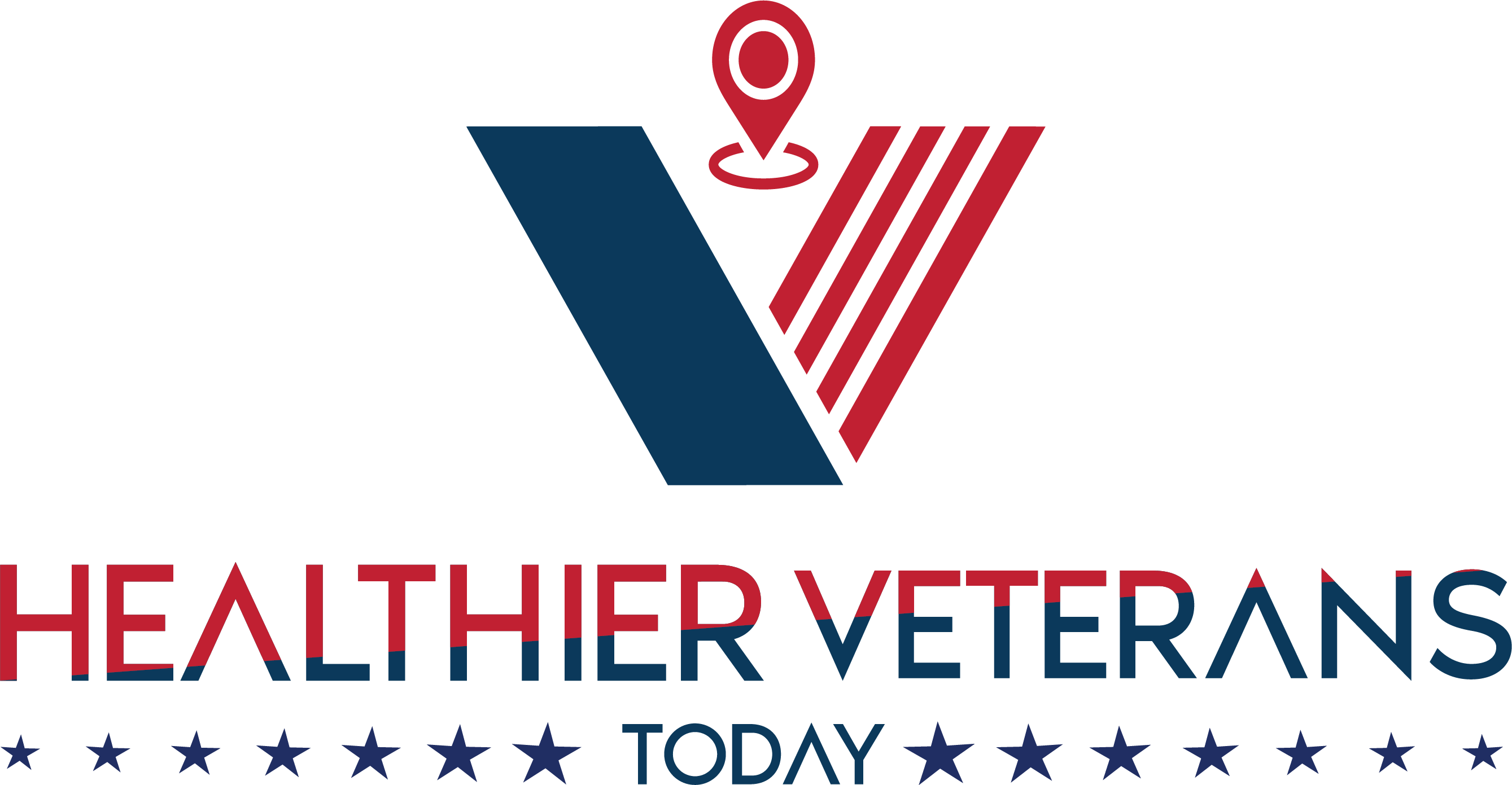Cupping therapy near me – Learn more with Healthier Veterans Today! Cupping therapy near me is an ancient healing technique that can help with back pain, neck pain, headaches, and other problems caused by battles.
It pulls on your skin with suction to increase blood flow to the affected area. Cupping can cause bruising and skin infections. The evidence for the benefits of cupping is mixed, but the treatment risks are generally low as with shockwave therapy near me.
Table of Contents
1. What Is Cupping Therapy?
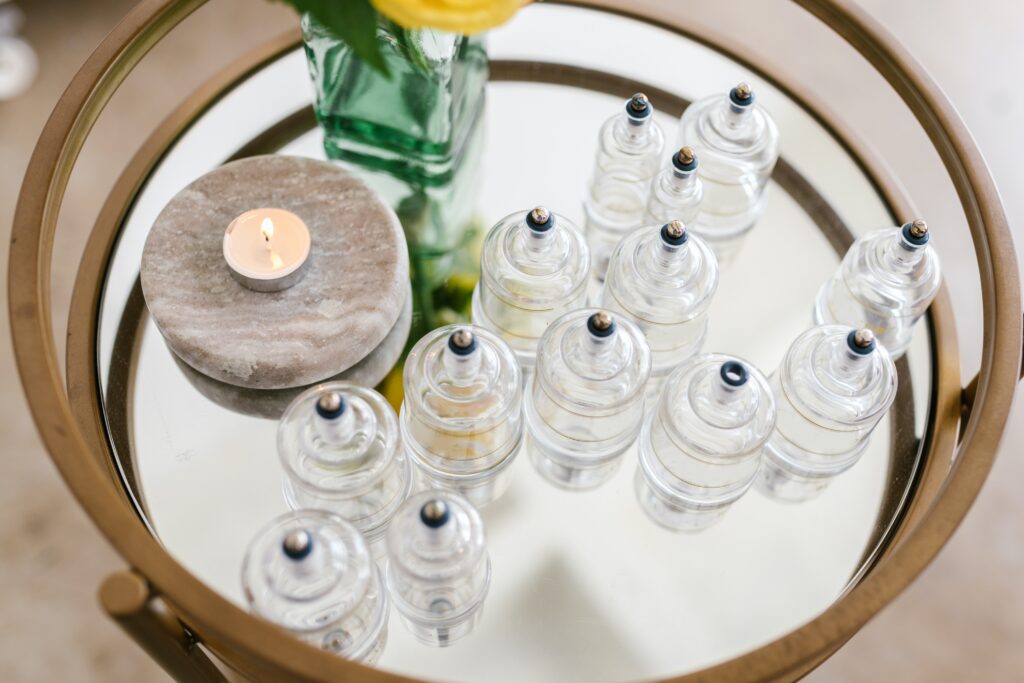
Cupping therapy near me is an ancient healing technique used by some to relieve pain. A health provider places Cups on your back , arms, legs, stomach or other parts of your body.
Inside the cup, a vacuum or suction like force pulls your skin upward. Cupping therapy near me is a type of traditional Chinese and Western Asian medicine.
This method has been used for thousands of years along with shockwave therapy near me. Cupping therapy is also known as cup therapy and suction cup therapy.
2. What Does Cupping Therapy Do?
Cupping draws blood to or away from specific areas of your body using suction. Cupping is most commonly used to treat painful conditions with shockwave therapy near me. Some claim it also helps with chronic (ongoing) health problems.
Cupping may help with the following symptoms:
- Arthritis, including rheumatoid arthritis.
- Asthma and other breathing issues.
- Gastrointestinal (GI) disorders such as irritable bowel disease (IBD).
- Carpal tunnel syndrome.
- Back pain,
- Neck pain, knee pain, and shoulder pain.
- Headaches and migraines.
- High blood pressure (hypertension)
3. How Does Cupping Work?
Researchers are still investigating how cupping alleviates pain and disease symptoms. There has yet to be a lot of research done on the therapy. Cupping suction draws fluid into the treated area.
This suction force expands and ruptures tiny blood vessels (capillaries) beneath your skin. Your body stimulates proper and regular healing at the cellular level by replenishing the cupped areas with healthier blood flow. Some people believe that cupping releases toxins as a result of this effect.
4. How Do Healthcare Providers Perform Cupping?
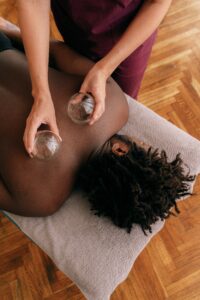
Cupping therapy near me can be done in a variety of ways. The steps differ slightly depending on the method used.
The shockwave therapy near me cups will be left in place for several minutes by your provider. Some treatments involve moving the cups to stretch and massage the area for a few seconds.
Cupping techniques include:
- Dry – Each cup is heated by your provider. The traditional method entails lighting an alcohol-soaked cotton ball on fire. The heat forces the oxygen out of the cup, resulting in a vacuum.
A more modern approach uses a suction device to remove air from the cups. Your skin is drawn up into the cup by the vacuum force.
- Running – This is similar to dry cupping. However, before you begin, your provider will apply lotion or oil to your skin. They will gently move the cups in different directions over the affected area of your body once they have been placed.
- Bleeding – Before inserting the cups, your provider lightly punctures your skin with a needle. Toxins can be released through the suctioned blood that has been captured in the cup.
Depending on the type of treatment, your provider may place several cups on your skin. On average, providers use three to five cups but may use up to seven. More than seven cups in a single treatment is unusual.
5. What Type Of Cups Do They Use?
Most service providers use glass or plastic cups, but cups can also be made of:
- Bamboo.
- Ceramic.
- Metal.
- Silicone.
6. What Should I Expect After Cupping?

Cupping therapy near me suction force opens tiny blood vessels called capillaries beneath your skin. You’ll have red, round cupping therapy marks on your skin that will fade in a week or two. Although these marks may appear as bruises, they are not actual bruises that cause muscle fiber damage.
Does Cupping Hurt?
Cupping should not be painful, but you may feel skin tightness during the procedure. After cupping therapy, you may feel bruised and slightly sore, but you should not experience severe pain.
Who Performs Cupping Therapy?
Cupping therapy near me training is available for a wide range of healthcare providers, including:
- Acupuncturists.
- Chiropractors.
- Therapists who provide massages.
- Doctors of medicine.
- Therapists who specialize in physical therapy.
7. What Are The Benefits Of Cupping Therapy?
Many people who have had cupping therapy say it:
- Pain and inflammation are reduced.
- Reduces muscle tension.
- Increases blood flow.
- Extends the range of motion.
8. What Are The Risks Or Complications Of Cup Therapy?
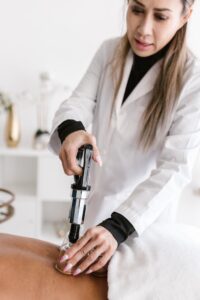
Cupping is a relatively safe form of therapy. You may still encounter:
- Bruising.
- The heat from heated cups causes burns.
- Fatigue.
- Headaches.
- Soreness or muscle tension.
- Nausea.
- Skin infections, itching, and scarring are all possibilities.
In rare cases, vasovagal syncope (fainting after a drop in blood pressure and heart rate) can occur. This is most common following wet cupping for people who have passed out from needle sticks.
9. Who Shouldn’t Get Cupping?
Cupping therapy should not be used if you are pregnant because researchers know little about its effects.
Cupping should also be avoided if you have:
- Anemia.
- A pacemaker.
- Hemophilia and other bleeding disorders.
- Blood clotting issues include deep vein thrombosis (DVT) or stroke history.
- Heart disease is a type of cardiovascular disease.
- Eczema and psoriasis are two examples of skin conditions.
- Epilepsy (seizures).
Even though there is a low risk of complications with cupping therapy, it is not for everyone. Consult with your healthcare provider before attempting cupping or any other alternative medical treatment.
10. How Effective Is Cupping?
There is conflicting evidence regarding the efficacy of cupping. Cupping may be beneficial for a variety of reasons, according to experts. Indeed, the success of cupping may be due to a combination of these factors.
Cupping therapy, for example, may:
- Encourage total-body relaxation and comfort.
- Increase your pain tolerance.
- Inflammation should be reduced.
- Improve blood circulation.
- Toxins should be removed from your body.
- Lower your cholesterol and LDL (bad cholesterol).
- Assist in the prevention of cardiovascular diseases such as atherosclerosis.
- Increase the number of red blood cells.
- Experiment with stimulating your peripheral nervous system.
Cupping therapy near me is commonly recommended as a complementary medicine treatment by most healthcare providers. In other words, rather than using it as a stand-alone procedure, it should be used with traditional shockwave therapy near me.
11. What Questions Should I Ask My Healthcare Provider?
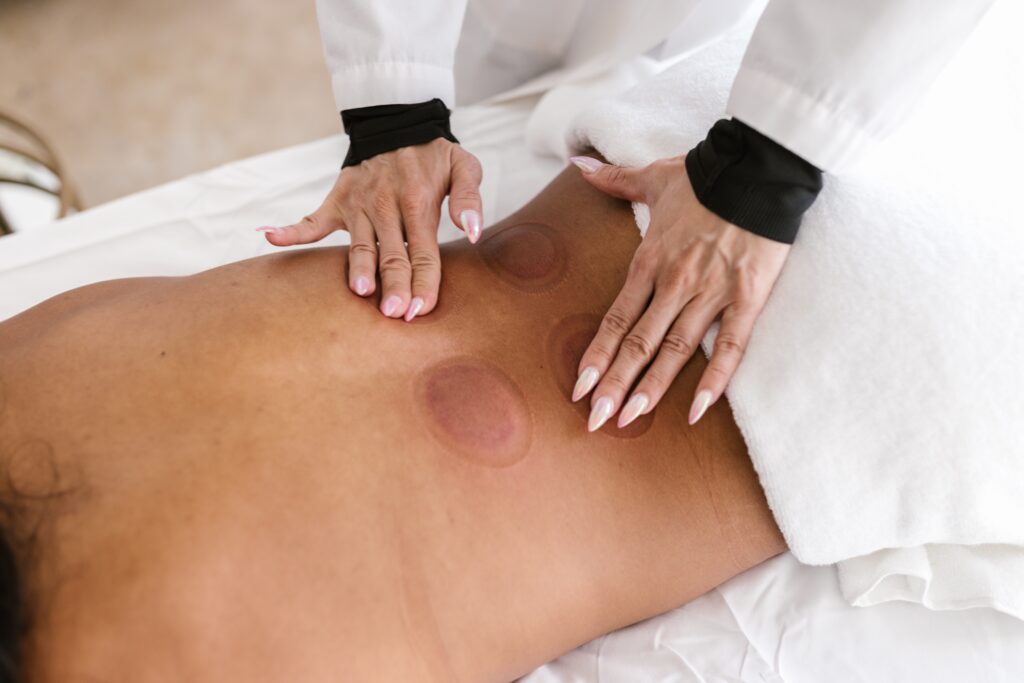
If you’re thinking about trying cupping therapy, here are some questions you should ask your doctor:
- Could cupping help my particular symptoms?
- Is there anything else I should try besides cupping?
- What is your personal experience with cupping therapy?
- Is there anything that would prevent me from striving to cupping?
- Do you have any recommendations for cupping therapists in the area, or how can I find a qualified cupping therapist?
Ways to Find Cupping Therapy Near Me for Battle Injuries…
People have used cupping therapy for thousands of years to relieve pain, headaches, and other symptoms. While there isn’t much research to back up claims of success, cupping works for some people and doesn’t come with many risks.
However, you should consult a healthcare provider before attempting cupping or any alternative therapy. Your provider may be able to refer you to a practitioner or specialist who can provide alternative treatment effectively and safely.





